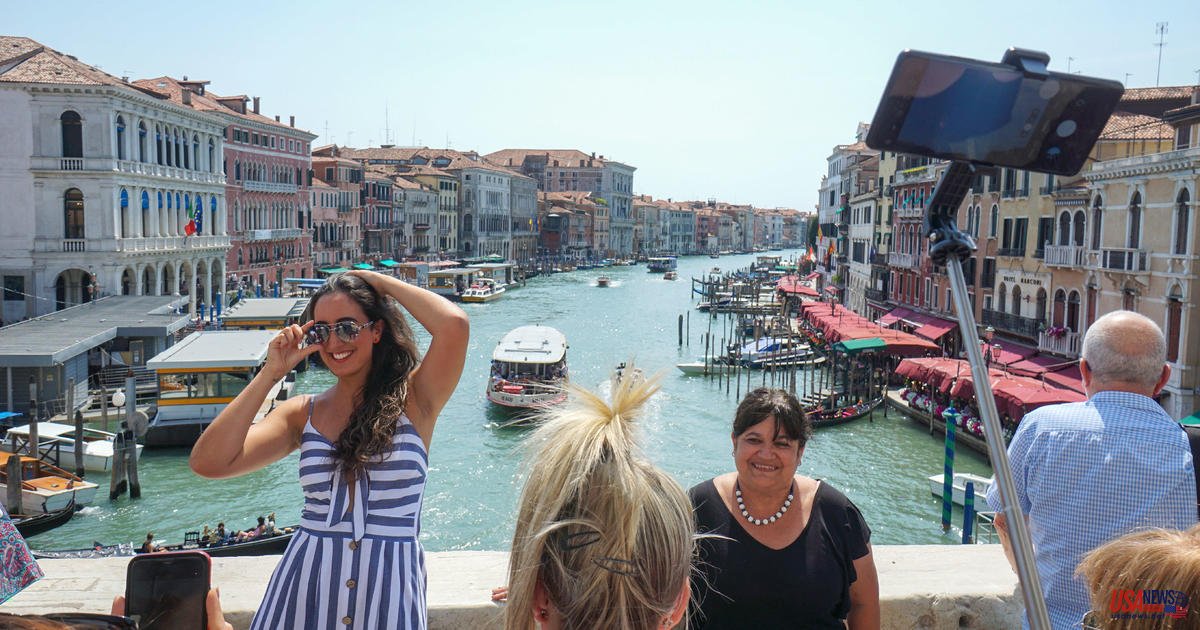Venice will require day-trippers to book reservations and pay a fee in order to visit the historic lagoon city. This is in an effort to manage the many visitors to the city that often outnumber the residents.
Officials from Venice unveiled Friday's new rules, which will take effect on January 16, 2023.
Tourists who do not wish to stay over will need to book an online reservation for the day that they are visiting the city. Bookings can cost anywhere from 3 to 10 Euros (or $3.15 to $10.50 per person), depending on when the booking is made well in advance and what season it is.
Tourists who do not follow the rules could be fined up to 300 Euros ($315) if stopped and unable to show proof of reservation using a QR Code.
About four-fifths (or a quarter) of all tourists visit Venice for just one day. The last year of tourism before the pandemic, 19 million tourists visited Venice for the day. This was just a fraction the revenue from the visitors who stayed at least one night.
The Venice tourism commissioner dismissed any suggestion that the measure would limit foreigners visiting the most visited city in Italy.
"We won’t talk about number cuts. Simone Venturini stated that we are talking about incentives as well as disincentives during a news conference held in Venice.
Although the reservation-and-fee model had been in discussion for a while, it was not implemented due to the pandemic. The COVID-19 travel restrictions made it nearly impossible for Venice to be visited -- and Venetians were able to have their city almost entirely by themselves, for only the second time in decades.
Despite the COVID-19 pandemic, tourism has seen a rebound. This phenomenon is known as "revenge traveling" because so many Americans are taking to the skies again.
In the middle of the 1960s, mass tourism began to Venice. While the numbers of visitors grew, the number of Venetians who lived in the city steadily declined. This was due to congestion and the high cost of transporting goods in the canal-free city. Local residents also suffered from frequent flooding, which caused serious problems.
The new reservation system is exempted for guests who stay in hotels or pensions, which already have to pay a lodging fee.
The new rule aims to balance Venice's resident population and visitors who are long-term or short-term. Venturini promised that visitors will be able to easily manage the new system. Venturini claims that Venice is the first to implement this fee for day-trippers.
Officials in tourism hope that the fee-and reserve system will reduce frictions between residents and day visitors once it is implemented. Tourists can outnumber residents in peak tourist season by a 2-to-1 ratio. The city measures only five kilometers (two miles) in size.
Venice's population is now approximately 50,000. This is a fraction of the population that existed a few generations ago.
Others small Italian towns have also seen their population decline and have offered houses for free to attract tourists to their areas and boost their local economies. Sambuca in Sicily and Gangi, which have less than 10,000 inhabitants each, are offering houses for sale at bargain basement prices, less than 1 euro.
The day-tripper fee is not charged to children under six years of age, disabled people and owners of second homes in Venice. To avoid paying the fee, second-home owners must show that they have paid real estate taxes.
The congestion problem in Venice is exacerbated by cruise ship passengers, especially around St. Mark's Square. They will also have to pay the fee.













